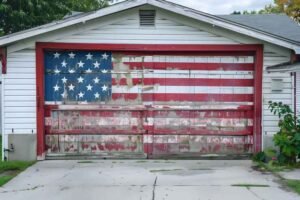Did you know that water damage can cause serious issues in your home, from mold growth to structural damage?
When faced with water damage restoration, it’s crucial to act swiftly and efficiently. Whether caused by a burst pipe, heavy rains, or flooding, knowing the essential steps for effective restoration can save you both time and money.
Here, we outline four vital steps to guide homeowners through this often overwhelming process.
Step 1: Initial Assessment
The first step in the water damage restoration process is to assess the extent of the damage. Walk through your home and document any affected areas. Pay attention to:
- Visible water accumulation
- Stains on walls or ceilings
- Saturated flooring or carpet
- Unpleasant odors such as mildew
It is essential to take notes and photographs of the damage, as this can be beneficial for insurance claims and professional assessment. Don’t forget to check the state of your belongings, if they’ve been damaged, it’s important to know what can be saved and what needs to be discarded.
Step 2: Water Extraction
Once you’ve assessed the damage, the next step is water extraction. Depending on the severity of the situation, consider renting or purchasing a wet/dry vacuum to effectively remove standing water. This part of the water damage restoration process is critical, as any remaining water can lead to mold growth and further damage.
If the water level is deep or the flooding extensive, it may be best to consult a professional water mitigation service. These experts are equipped with advanced equipment to remove water efficiently and quickly, often much faster than DIY methods.
Step 3: Drying and Dehumidification
Once all visible water is removed, the drying process begins. Open windows and doors to promote air circulation, which speeds up drying. Use fans and dehumidifiers to help eliminate moisture from the air. The drying process is essential as residual moisture can promote mold growth and attract pests.
Key areas and items to focus on during drying include:
- Walls and ceilings
- Carpets and flooring
- Furniture and belongings
- Insulation and drywall
Continuously monitor humidity levels to ensure they remain low. A hygrometer can be a valuable tool in this stage, alerting you to any excess moisture that needs addressing.
Step 4: Restoration and Repair
After the affected areas have dried completely, it’s time for restoration and repair. This involves fixing any structural damage and replacing materials like drywall and flooring. You may also want to repaint walls where stains exist. It’s essential to use mold-resistant materials if you are dealing with moisture-prone areas such as basements.
If you’re not sure where to start with repairs, consider hiring a reliable water clean-up solutions service provider. These experts can provide the knowledge and skills necessary to handle the nuances of home repair after water damage.
Get Started on Your Water Damage Restoration
Addressing water damage restoration in your home can seem daunting, but by following these essential steps, you can manage the situation effectively. Remember, acting quickly and efficiently can make a significant difference in minimizing damage.
For more tailored assistance, don’t hesitate to reach out to professionals who specialize in flood cleanup and restoration. They’ll help you restore your home to its original condition while you focus on rebuilding your life.
Ready to feed that curiosity of yours? Our website is just a click away, and trust us, it’s a rabbit hole worth falling into!







